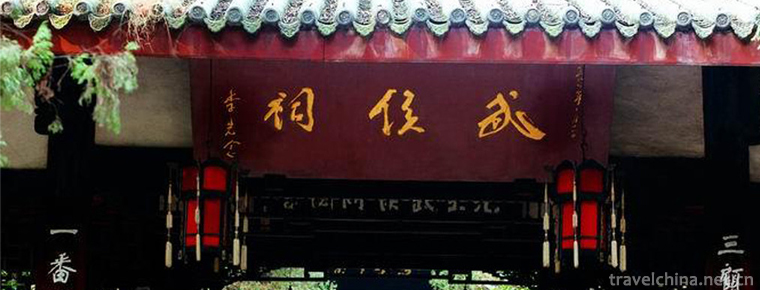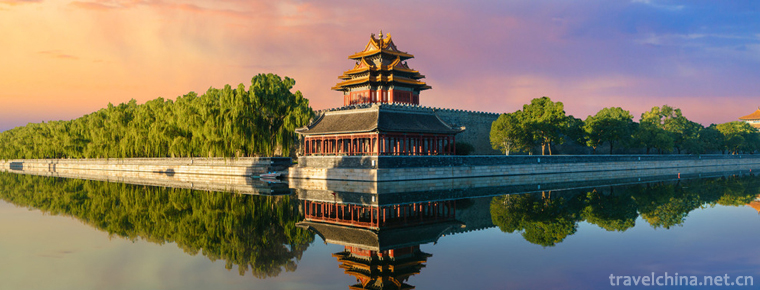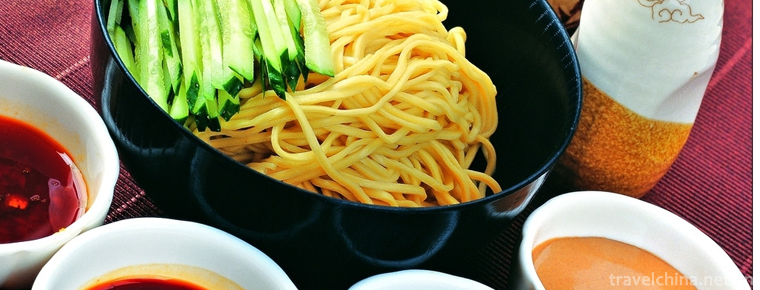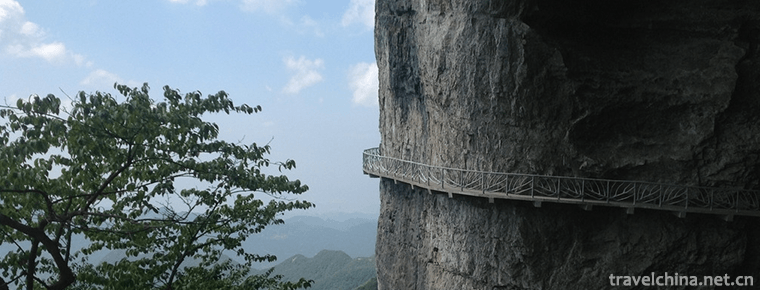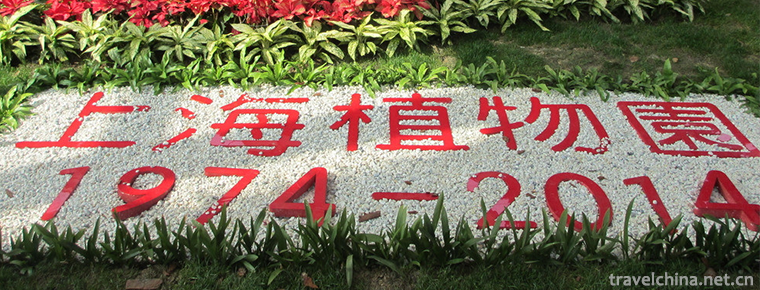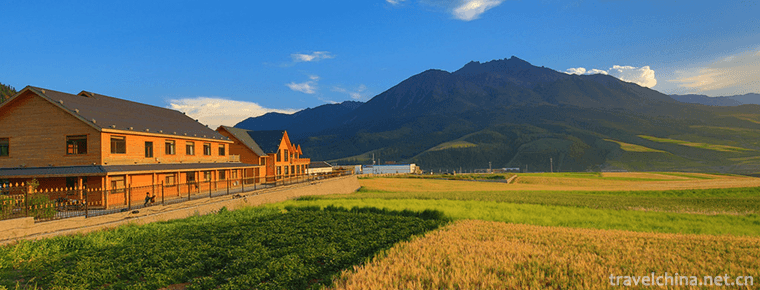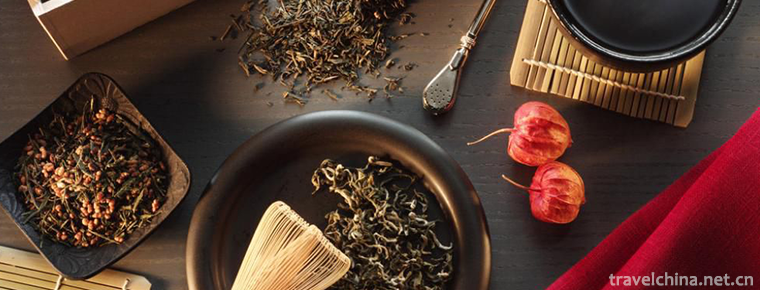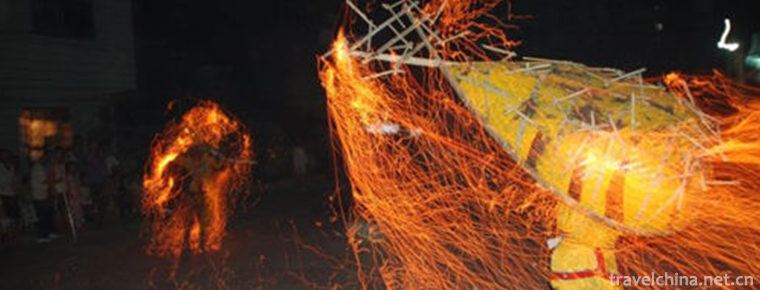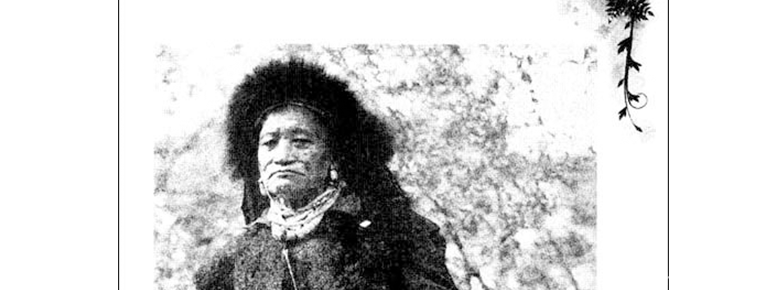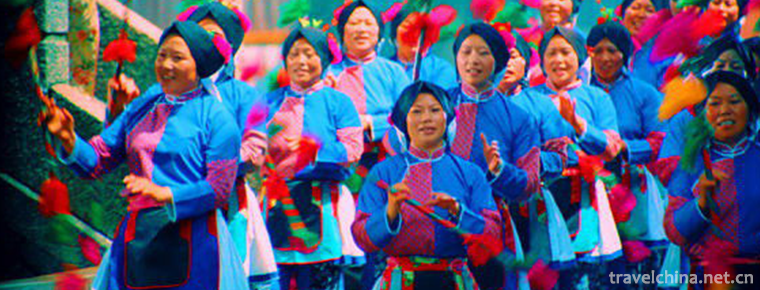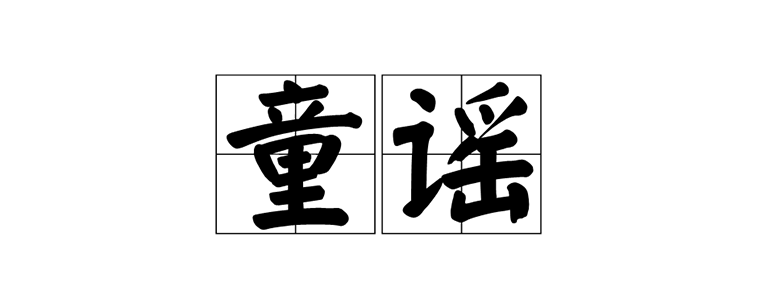The tru Valley
The tru Valley
Turugou is located in Liancheng Forest, Yongdeng County, 160 kilometers northwest of Lanzhou City. It belongs to the eastern foot of Qilian Mountains. Turugou is a natural landscape tourist area with strange mountains and beautiful waters as its main body. It is known as "mythical green valley".
Turugou was officially opened to tourists on August 1, 1984, and approved as a national forest park by the Ministry of Forestry in 1992. In 1997, Turugou was selected as the top ten pacesetters of the National Forest park, and has become an ideal destination for Forest Ecotourism in Lanzhou.
geographical position
Turugou is located in Liancheng Forest, Yongdeng County, 160 kilometers northwest of Lanzhou City. It belongs to the eastern foot of Qilian Mountains. Turugou is a natural landscape tourist area with strange mountains and beautiful waters as its main body. It is known as "mythical green valley". "Turu" is an ancient Mongolian language, meaning "big, good" or "beautiful orchard". Turugou was once a multi-ethnic mixed area, affected by mountainous climate, with abundant rainfall, hills and peaks in the gully, verdant trees, winding paths, and Tuqinaxiu, it has become a primitive natural scenic spot without artificial carving. In the area, the Turu River, which originated from the peak of Obo, flows from northwest to southeast, then converges into the Datong River through the front ditch after the confluence of the three forks. Along the valley, highways are built directly into the ditches, and the two sides of the river move with different scenery and weather. Turugou Natural Scenic Spot is 1,998-3,165 meters above sea level with a total area of 6,157 hectares.
Natural scenery
Tourists cross the Datong River Bridge to enter the former Turugou Forest Scenic Area. Six kilometers from the Bridge to Sancha Tourist Village, it is divided into two ditches, big and small. On the left side is the Great Turu ditch, which is 14.7 kilometers long. It is the main scenic spot of the park with peculiar landscapes. There are 24 scenic spots, including peaks, mountains, cliffs, rocks, various forms, cliffs, waterfalls and stone drops. Although they have been created from heaven, they are like human beings. Up again, you will go to Gouzhang Grassland, a charming grassland tourist area. From the right of the three forks, it enters the small Turugou forest area. The trench is 7 kilometers long and has 12 scenic spots. There are more than 1,600 kinds of trees, flowers and plants in the community, inhabiting dozens of rare animals such as musk deer, deer, blue pheasant, lynx, stone sheep, a vast forest sea, ancient trees towering, streams, birds and flowers everywhere, like a natural gallery.
Turugou National Forest Park is located in the hinterland of Liancheng Forest District, Yongdeng County, Gansu Province. It is 160 kilometers away from the provincial city of Lanzhou and Xining City, Qinghai Province. It belongs to the eastern foot of the Qilian Mountains, with a total area of 5848.4 hectares and an elevation of 1998-3165 meters. Turugou is known as Tulugou because of its strange peaks, green trees and evergreen all the year round. Here the landform is peculiar, beautiful scenery, the vertical distribution of vegetation is very obvious, the top is rich grassland, vast pasture, mountainside forests stand, foothill farmland cover. The garden is known as the "mythical green valley" because of its dramatic ups and downs and rugged mountains, which can fully appreciate the natural scenery.
"Turu" is an ancient Mongolian language, meaning "big, good" or "beautiful orchard". Turugou was once a multi-ethnic mixed area. Affected by mountainous climate, it has abundant rainfall, hills and peaks in the ditches, verdant trees, winding paths and Tukina Show. It has become a primitive natural scenic spot without artificial carving. The Turu River, originating from the peak of Obo, flows from northwest to southeast. After the confluence of the three branches, it flows into the Datong River through the front ditch. Highway through the ditch is built along the valley. The two sides of the river move step by step in a myriad of pictures.
The park can be divided into the former Turugou Forest Scenic Area, the small Turugou Forest Scenic Area, the Sancha Tourist Village and the Turugou Grassland Recreation Area. There are 47 scenic spots in size. The main scenic spots are Hump Ridge, Skylight Eye, Tibetan Dragon Cave, Maitreya, Tongtianmen, Diamond Peak, Qixi Bridge, Lampstone, Gongtai, Qingbu Guan, Shibi Xiezhu, etc. There are more than 20 scenic spots with different shapes and peculiar shapes. The city's seclusion, Emei's beauty, Huashan's danger, Jiuzhai's wonder "reputation.
Tourists cross the Datong River Bridge to enter the former Turugou Forest Scenic Area. Among them, stellar leaf grass, purple spot peony and other rare and endangered plants are protected by the state. Blue pheasant, musk deer and other animals are protected by the state. Willow flower, antler, mushroom and fern are called "four mountain treasures" on the dining table.
Turugou was officially opened to tourists on August 1, 1984, and approved as a national forest park by the Ministry of Forestry in 1992. In 1997, Turugou was selected as the top ten pacesetters of the National Forest park, and has become an ideal destination for Forest Ecotourism in Lanzhou. Turugou National Forest Park is a huge "green treasure house" for Mulan, located in the northwest of China. It not only plays the role of conserving water resources, regulating climate and maintaining ecological balance, but also is a comprehensive tourist attraction integrating sightseeing, tourism, teaching, scientific research and entertainment.
Traffic Information
Special Tourist Line
April 28, 2018. The scenic spot opened a special tourist line from Lanzhou to Turugou National Forest Park.
Schedule of special tourist routes from Lanzhou to Turugou National Forest Park
Location, departure time, round trip cost (RMB/person)
Lanzhou Railway Station Passenger Transport Center 6:30:90
Lanzhou Wuquanshan Park Gate 7:00 90
Lanzhou Friendship Hotel opposite 7:20 90
Peili Square, Anning, Lanzhou 7:45:90
Lanzhou Xisha Bridge 8:00 90
Lanzhou has dozens of bus lines in the center of the city, leading to all parts of the city. There are buses and buses.
The price of the bus is one yuan, one yuan and fifty cents, two yuan and three yuan. Bus and China Bus fares are 1 yuan for boarding and 3 yuan for arriving at Xigucheng Railway Station.
Taxi
Lanzhou has more than 6,000 taxis serving day and night. There are three foreign-related fixed-point tourist automobile companies, which provide various types of tourist buses, buses and cars. They can rent short, long, monthly and daily.
The taxi price in Lanzhou varies from 5 yuan to 8 yuan, depending on the grade of the vehicle. The basic kilometre is 3 kilometres, and then the rental price varies from 1 yuan to 1.8 yuan per kilometre. After 10 kilometers, the driver will be charged 0.5-0.9 yuan per kilometer for empty posts. If you rent a car at night, you will add a surcharge of 0.2 yuan per kilometer.
Taxis in Lanzhou are charged according to the meter, and drivers are very disciplined and operate by meter.
Intercity traffic
Lanzhou is located in the northwest of China, but it is the geographical center of the mainland of China. To go north to Xinjiang, Ningxia and Inner Mongolia; to go west to Qinghai-Tibet; and to go south to Sichuan, they must pass through Lanzhou. As the largest railway hub and commercial and Trade Center City in Northwest China, Lanzhou's traffic is in all directions.
aviation
Lanzhou Zhongchuan Airport has opened nearly 30 routes from Lanzhou to Beijing, Shanghai, Guangzhou, Shenzhen, Chengdu, Xi'an, Nanjing, Hangzhou, Dunhuang and Jiayuguan, and regular chartered flights to Hong Kong every Tuesday.
Lanzhou City to Zhongchuan Airport 70 kilometers, about an hour's drive, there are buses and taxis stop. Daily buses to Zhongchuan Airport will be dispatched at the Civil Aviation Ticket Office in advance, depending on the flight take-off.
Civil Aviation Ticket Office Address: 520 Donggang West Road, Lanzhou City (west of Lanzhou Hotel, next to the Provincial Cultural Department)
Longhai, Lanxin, Lanqing and Baolan railway trunk lines intersect here. Lanzhou is also an important stop on the second Eurasian Continental Bridge from Lianyungang in the east to Rotterdam in the Netherlands in the west.
Lanzhou Railway Station is located at the foot of Gaolan Mountain on the south side of the city. Nearly 60 passenger trains pass through the station every day to and from cities in the country. There are express trains from Lanzhou to Zhangye, Jiayuguan, Pingliang and other tourist cities in the province.
There is also a "Lanzhou West Station" in Lanzhou, which is ten minutes'train journey with the "Lanzhou Station".
Long distance passenger transport
Lanzhou has seven bus passenger stations, four national roads and five provincial roads.
Lanzhou is located in the eastern part of Gansu Province, far from the major tourist cities in the Hexi Corridor. It is better to take trains than cars. But if you want to go to places where there is no train connection, you can only take long distance buses.
Special food
Lanzhou is a multi-ethnic city, with a long history, important geographical location, diversity of residents, etc. Lanzhou has created a unique dietary culture. Lanzhou has its own system of local dishes - Longcai, as well as rich and varied local snacks, as well as Sichuan cuisine, Shandong cuisine, Beijing cuisine and other famous dishes from all sides of the Yangtze River. There are so many patterns and rich contents that it has become a great pleasure to visit Lanzhou.
Lanzhou people are fond of food, especially hot and sour food. They are especially fond of Sichuan cuisine and hot pot. The city's famous cuisine and national flavor catering are all available. Jingyang Tower, Yuebin Tower, Emeichuan Restaurant and Huizhou Restaurant are the four most famous local restaurants, where roast pigs and*thousand-layer beef cakes are delicious and cheap. In addition, Lanzhou specialty melons and fruits and other raw materials made of flavor dishes, such as lily peaches, Pu brandy melon, Jincheng eight treasures melon carving, goldfish salad, snow mountain camel's palm, fried camel hump, yellow flower stewed duck and so on are well known.
Lanzhou's famous restaurants and restaurants are mostly concentrated in the downtown area of Qingyang Road and Jiuquan Road, where there are many shops and restaurants, which are truly "commercial roads, food streets". People here can enjoy tea and friends, or have dinners and gatherings, and enjoy delicious dishes and delicate snacks in Lanzhou.
Lanzhou's main snacks are mainly pasta. In addition to the famous Lanzhou noodle noodle soup in Lanzhou, it is famous for making skin, hot winter fruit, grey beans, spicy and spicy flour, face candy, sweet fermented grains, oil fried noodles, pig dirty noodles, fried noodles, stripes, water and other household snacks.
Walking in the snack street, exploding, frying, frying, boiling, sound, fragrance, appetite. Call a bowl of beef noodles, a plate of thousand layers of beef pie, taste gray beans, and instantly fulfill your wish; sweet, sweet, spicy, crisp, soft, hot and cold, as you like. In addition to the above, what kind of cold powder, pot helmet, sugar cake, crystal cake, fried potato chips, enzymes cake, pancakes, steamed dumplings, crystal buns, potstickers, Camellia oleifera, cat ears, fish drilling sand, steamed buns, lamb miscellaneous, tofu brain, chicken shredded wonton, mutton steamed bun, Gaosan sauce meat, Jingning roast chicken... There are potato chips, chicken kebabs, mutton kebabs, casseroles, plus the new members of Lanzhou snack family: hot and spicy, Sichuan Dandan noodles, Shaoshi noodles... As for Western varieties of hamburgers, sandwiches, coffee and milk, ice cream... Even if you can't eat it all over, just look at it and smell it, you will salivate and be satisfied.
Lanzhou has many snack streets, such as farmers'alleys, political roads, Railway New Village markets, Xiguanshi characters, Xiaoxihu, Jianlan Road, etc. Business hours are generally sustainable from morning to midnight, and some stalls are open day and night.
Diet custom
Northwest people are rough and bold. They must drink liquor for dinner and drink more than half of it. If visitors from other places have dinner with their relatives and friends in Lanzhou, they can enjoy a big drink without sticking to the details. Qinghai highland barley wine is a well-known local variety. The more you drink, the happier the host will be.
Tourism shopping
Lanzhou is an ideal place for shopping in Gansu Province, where the province's tourism crafts and local products are gathered. You can go to the Central Plaza, or to the Railway New Village Business District, Nanguan-Xiguan Business District, I believe there will be a lot of gains. It is the most important commercial district in Lanzhou City. There are many large commercial buildings, specialties, traditional handicraft products, modern tourist commodities, and all kinds of them. Also worth visiting is Xijin Road Business District near the West Railway Station, where Jiuquan Night Light Cup (also known as Jade Cup) is the most famous.
Tourism development
In order to speed up the development of forest tourism, we will make every effort to build a large ecological, environmental, civilized and harmonious scenic spot in the outskirts of Lanzhou. By attracting investment, we will introduce Lanzhou Xinyuanfeng Co., Ltd. to invest in Turugou sightseeing car and large parking lot projects. The total investment of the project is more than 7 million yuan, 32 sightseeing vehicles are purchased, from the mouth of Turugou ditch to the grassland 14 kilometers away, and 28 kilometers of tourist routes are operated.
Pictures From:
http://bbs.fengniao.com/forum/1885505.html








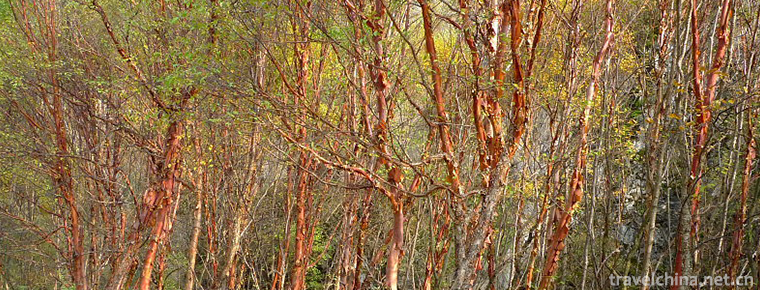
-
Wuhou Temple in Chengdu
Martial Marquis Memorial Temple,Chegdu city,Sichuan Province.
Views: 213 Time 2018-09-29 -
Cold Noodles with Sesame Sauce
Cold Noodles with Sesame Sauce are also called cold noodles.
Views: 133 Time 2018-10-12 -
Nanchuan Jinfo Mountain
Jinfo Mountain: World Natural Heritage, National AAAAA Tourist Scenic Spot, National Key Scenic Spots, National Forest Park, National Nature Reserve, National Natural Heritage.
Views: 271 Time 2018-12-12 -
Shanghai Botanical Garden
Located in the southwest of Xuhui District, Shanghai Botanical Garden, formerly Longhua Nursery, is a comprehensive botanical garden with plant introduction, domestication and display.
Views: 203 Time 2018-12-19 -
Qilian Mountain National Nature Reserve
Gansu Qilian Mountain National Nature Reserve is located at the northern foot of Qilian Mountain in the intersection zone of Qinghai-Tibet, Mongolia.
Views: 166 Time 2019-02-07 -
Cham
The Yi epic, recorded in the old Yi language and widely circulated, describes the origin of all things in the Yi legend. The Yi people call it a "search" to describe the origin of a thing be.
Views: 157 Time 2019-04-15 -
Black Tea Production Techniques
Black tea, originally known as "Border Tea", was smuggled across the border by merchants as early as the end of the 16th century. In the Ming Dynasty, black tea was designated as.
Views: 112 Time 2019-05-03 -
Fire tiger
Fire tiger is a traditional folk dance form spread in Fengtai, Anhui Province. One of its greatest characteristics is the word "fire". Performers often wear tight, thick clothes and tie tige.
Views: 150 Time 2019-05-05 -
Legend of the Ancestors of the Loba Nationality
The legend of the ancestors of the Loba nationality is an organic part of the life of the Loba people, a mirror of the Loba society and a way of existence of the folk life of the Loba people..
Views: 101 Time 2019-05-15 -
Womens clothing in Yongzhishui Townshi Suzhou
The women's clothing in Yongzhishui Township, Suzhou, is an outstanding representative of the Han nationality's clothing. It is a typical and representative clothing of the working people in Wu area. .
Views: 271 Time 2019-06-17 -
Nursery rhyme
Nursery rhymes are short poems written for children, emphasizing rhythm and rhyme. They are usually spread orally. Many nursery rhymes are processed and spread according to the idioms in ancient ritua.
Views: 158 Time 2019-06-23
